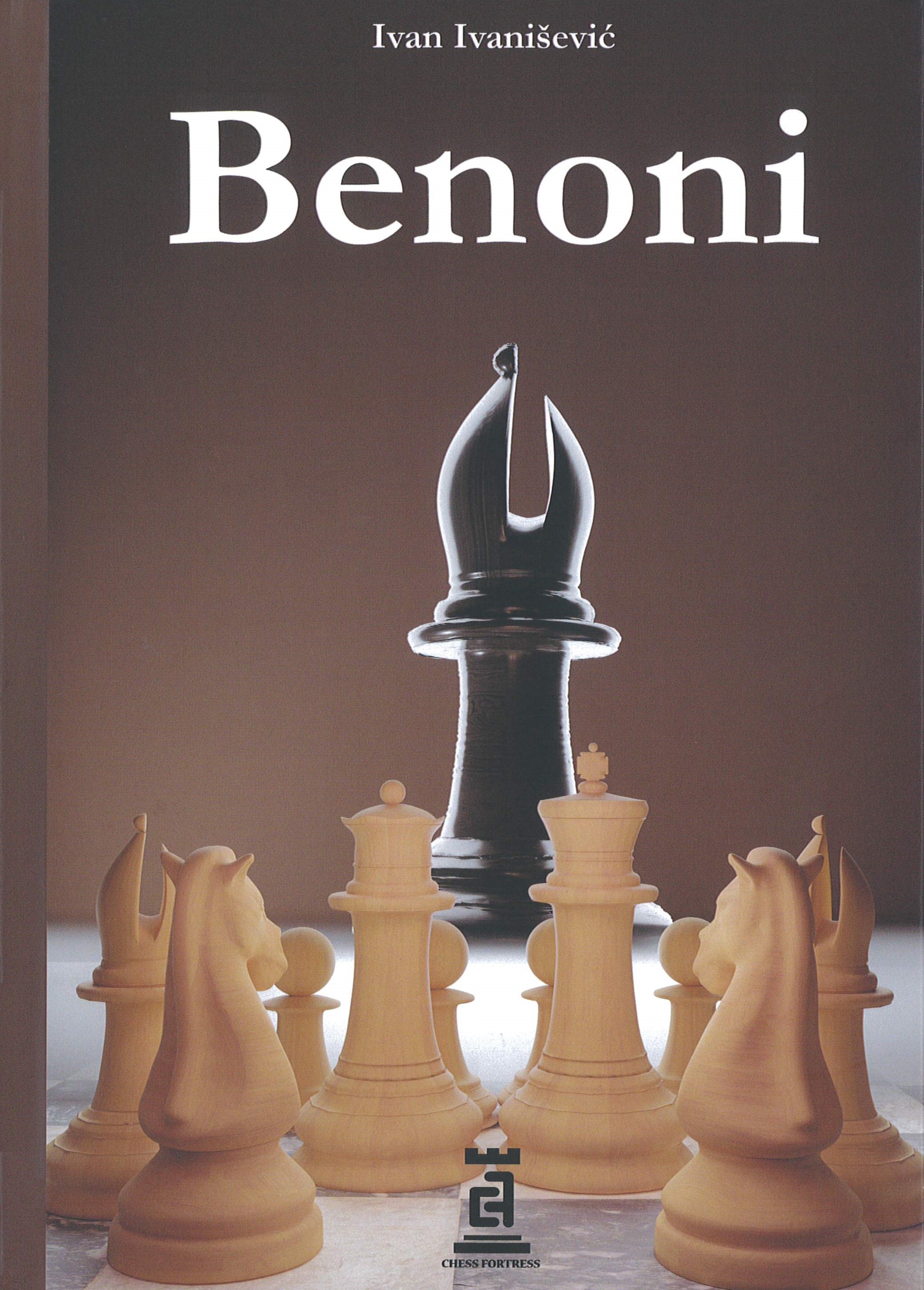The Benoni Defence or simply Benoni, is reached after 1 d4 Nf6 2 c4 c5. It is one of the typical defenses available to counter white’s solid 1. d4. The etymology of the word Benoni can be traced back to biblical times, with the unusual meaning The son of sorrows in Hebrew. True to its profound synonym, players who employ the rather rash counter attacking melee love the resulting unbalanced positions.
The Modern version of Benoni, simply the Modern Benoni, goes like this 1 d4 Nf6 2 c4 e6 3 Nc3 c5. And what’s the best approach to this sortie than to simply go with the commandments of the opening phase?
White plays the natural 4. d5 and seizes space in the center of the board.

What is Black’s idea behind allowing such a liberty to happen?
In the new book Benoni by Ivan Ivanišević (published by Chess Fortress and now available on Forward Chess), the following paragraph sums up Black’s stance admirably.
‘The Benoni is a chess opening that offers Black excellent chances to play for a win. One of the main reasons for this is that it creates unbalanced positions from the very beginning, which favors the player with a better understanding of the nuances of the position. The Benoni involves Black placing their pawns on d6 and c5, and then fianchettoing their dark-squared bishop on g7. This setup creates a solid pawn structure and puts pressure on White’s center, making it difficult for them to launch a direct attack, while simultaneously threatening the c3 knight and the b2 pawn.’
World Champions Mikhail Tal and Bobby Fischer both won a number of beautiful games with the Modern Benoni, even at the highest level of matches for the ultimate title. Since the respective heydays of the aforementioned ‘disturbers of the peace’, the Modern Benoni has lacked a hero and is usually treated with suspicion. Yes, we see the occasional ‘must-win’ game featuring the Benoni, but it doesn’t always end well and the defence remains a rare guest at the top levels of chess.
Last week, former World Champion caused a stir by using the Modern Benoni against Vincent Keymer at the GRENKE Chess Classic and notching up an impressive victory. Will this start a trend?

Stockfish gives a profound ?! for c5. But guess what? Carokann used to receive the same mark.
Fans of exciting chess would like to think so and if anyone out there would like some inspiration to tempt them over to the dark side of one of the most uncompromising chess openings of all, then these snippets from Ivanišević’s Benoni might be the push you need.
Lei Tingjie – Erwin L’Am, Wijak aan Zee 2017
This all looks good for White, who appears to be making progress. However, the famous Benoni bishop makes its presence felt after…
18…Rxg5!
19 fxg5 Ne8
20 Qf4 Be5
21 Qf2 Nd6
…and it is plain to see that Black’s sacrifice was correct as he now controls the position (0-1, 41).
The dark-squared control Black enjoys in so many Benoni games can lead to traps galore, such as the one set in this game.
Loek Van Wely – Vesilin Topalov
Antwerp 1997
The question is, what happens if White now plays 15 Qxd6?? The answer is that the queen is trapped on an open board after 15…Rb6.
Of course, Van Wely was not likely to fall for such a trap, but would your opponents be so aware the potential dark-squared catastrophe in Rapidplay encounter? Anyway, Topalov still won the game (which helped to win the tournament, half a point ahead of the ageless Viktor Korchnoi).
The dark-squared dominance can continue deep into the endgame. In the following snippet, the famous Benoni bishop switches its attention from the queenside squares to the all-important queening square on g1.
Semko Semkov – Bela Perenyi
Saint John 1988
55…Kh2
56 Bd6 g4
57 hxg4 hxg4
58 Be5 g3
59 Bd6 Kh1
White now resigned, in view of the inevitable pawn promotion after 60…f3! 61 gxf3 g2+ and 62…g1=Q (0-1). Incidentally, this game was a great struggle all the way through and well worth playing over in full.
Come on, everybody – give the Modern Benoni a try!
Sean Marsh
- Dover Books are finally here! - November 20, 2024
- Book Review: Moves 3 to 10 by Nery Strasman - August 9, 2024
- The Life and Games of Dragoljub Velimirovic (Volume 2) by Georg Mohr and Ana Velimirovic-Zorica - July 23, 2024


